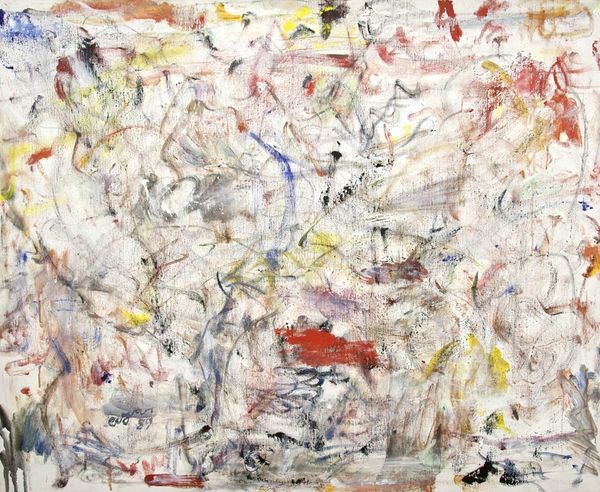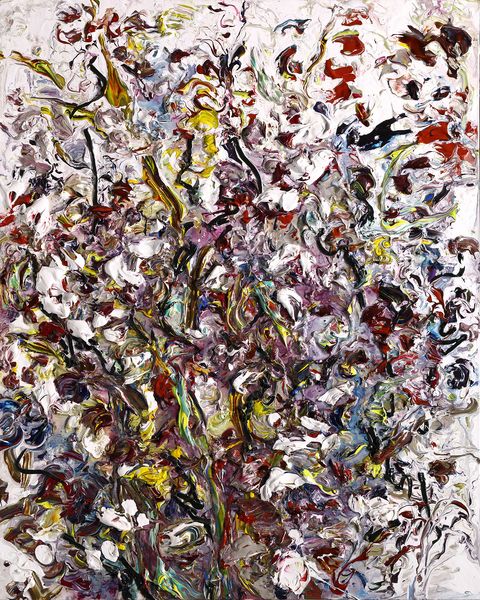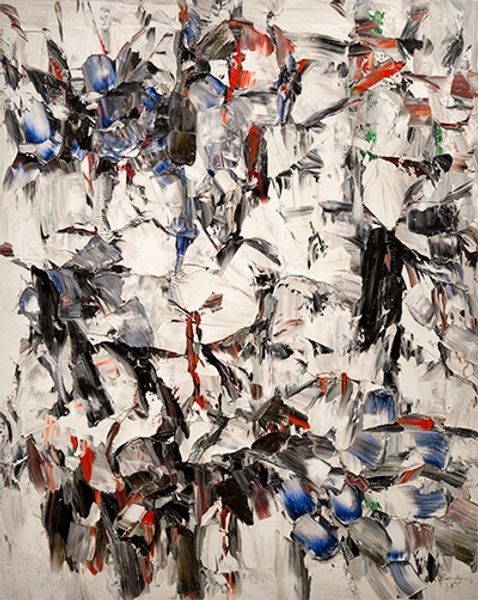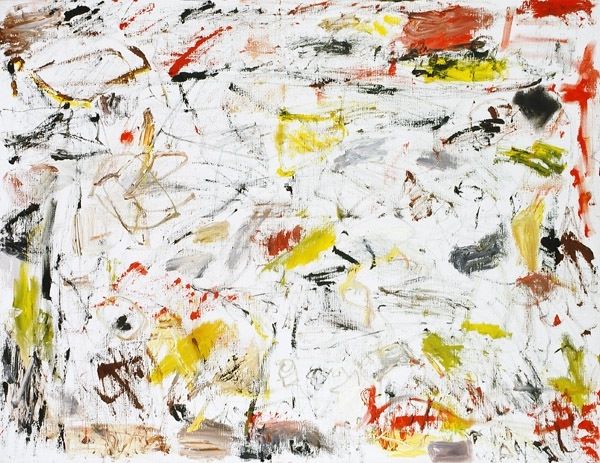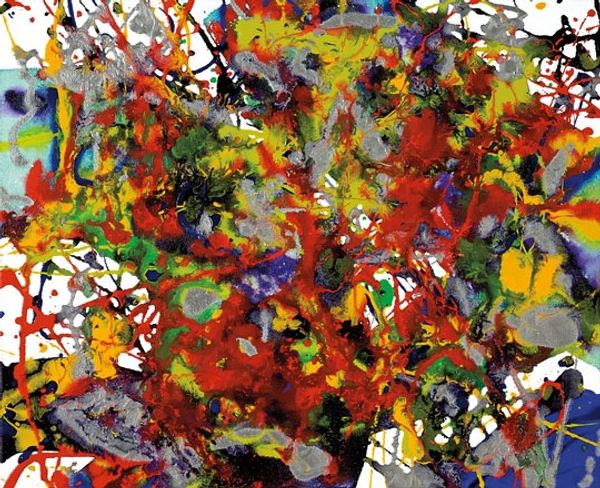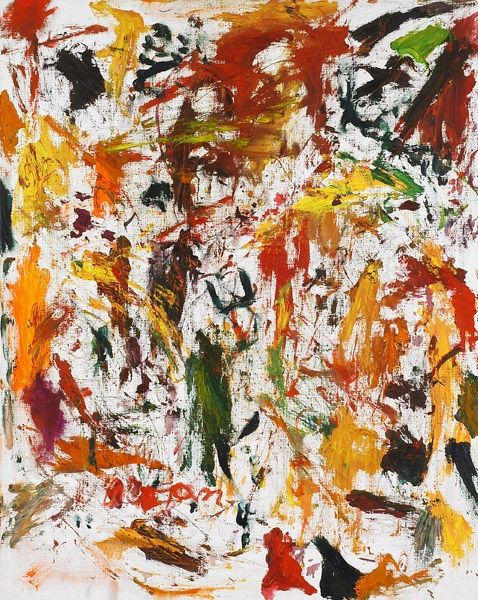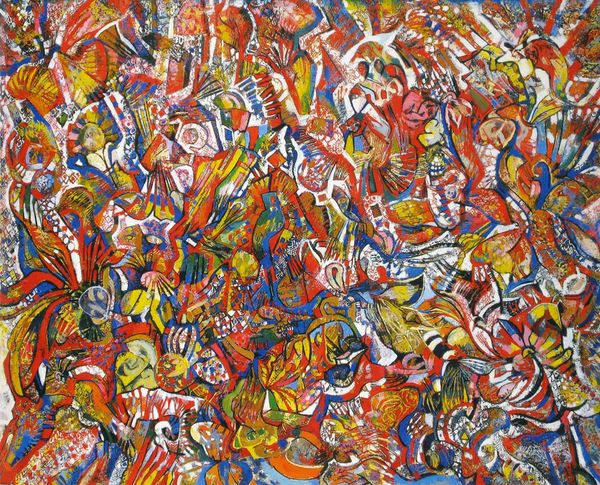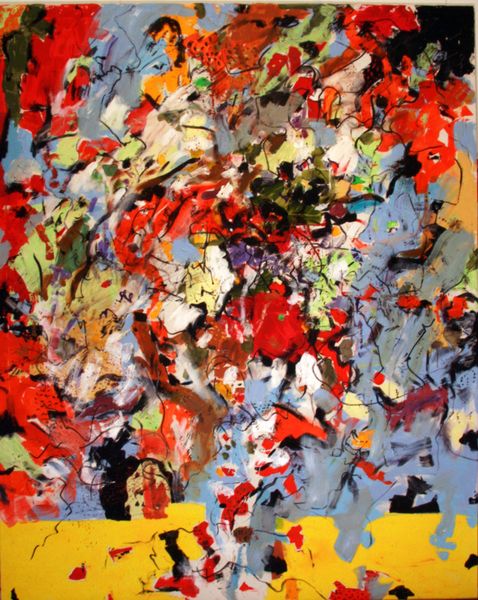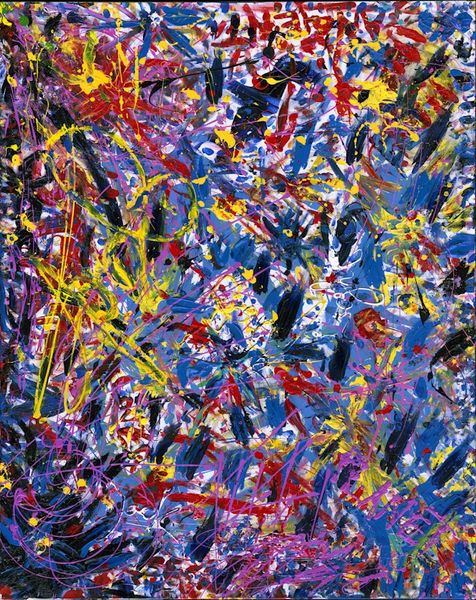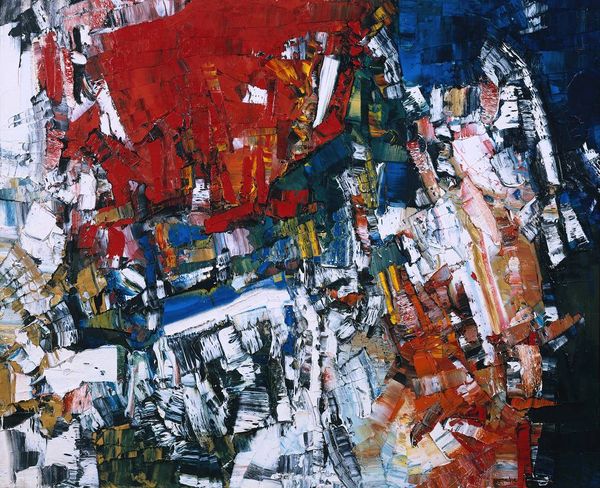
Dimensions: overall: 243.84 × 243.84 cm (96 × 96 in.)
Copyright: National Gallery of Art: CC0 1.0
Curator: We're looking at Oliver Lee Jackson's "Untitled (5.21.95)" from 1995, executed in acrylic paint. Editor: My first impression is one of tremendous energy, almost chaotic, but contained within the square canvas. The surface is so active, every inch demands attention. Curator: Jackson was deeply invested in the tenets of Abstract Expressionism, wasn't he? That pursuit of conveying internal experience through purely formal means seems very much at play here. Editor: Absolutely. This fits within that postwar moment when abstraction signified freedom, a departure from prescribed modes of representation. The dense application of paint itself becomes the subject. Curator: Yes, the materiality is crucial. The allover composition—where no single point dominates—emphasizes the flat, non-hierarchical nature of the canvas. The color too. What do you make of the palette? Editor: It's complex. Primarily greys and blacks, grounding the composition, yet punctuated by these jarring pops of red, green, blue. They refuse to resolve into a unified whole; it’s almost discordant. It gives the impression of a layered history, something buried, but still vibrant under the surface. Curator: It could be argued that Jackson is less about pure formalism than a visual articulation of experience rooted in Black history and culture, in that sense pushing beyond purely formal concerns and allusions to art history. The act of applying and manipulating the paint, even destructively so, hints at something much bigger than purely aesthetic considerations. Editor: That makes sense. To me the density and fragmentation suggest layers of social and cultural meanings, resisting a singular narrative or easy consumption. It's challenging to read, precisely because it demands active engagement. Curator: Indeed. By refusing closure, Jackson compels us to confront the inherent complexities of the subject—whether formal, historical, or personal. The painting remains open, alive. Editor: I appreciate that unresolved tension. It reflects how histories themselves are perpetually revised and reinterpreted. This artwork continues to be relevant in our era precisely because it pushes us to ask difficult questions.
Comments
No comments
Be the first to comment and join the conversation on the ultimate creative platform.
